Donald A. Levin (2000) quotes Raven, Berlin and Breedlove (1971), who wrote…“our system of names appears to achieve a reality which it does not in fact possess”. I find this a curious quote, as Levin was discussing species concepts and we could ask if species themselves have any reality. There is a lack of a universal definition for the word “species” and I find the recurring reference to “concept” as related to the word, very confusing. Why should the species be a concept, subject to individual interpretation? This is of course if they have no reality and we each create our own. How useful is this for science? Donald goes on to generate his own “species concept” in which he proposes…“that each species has a unique way of living in and relating to the environment and has a unique genetic system…”, and he refers to this as the eco-genetic species concept. (But still we do not know what he means by “species”.) He says that the ecological properties of such species are not uniform within the species and thus not equivalent to the taxonomic properties of species, “which are chosen because they are conservative and stable attributes”. It would be interesting to know just what he means by “taxonomic properties” and I presume he means primarily morphological characters. Certainly there must be taxonomists who utilized or have utilized ecological facets to decide on their species. It must also be recognized that the taxonomist is confined to the material at his disposal for examination and decision making.
My view, to the degree that I can understand Levins’ arguments, is that he has not truly stated the case. The problem concerning the reality of Latin names, is that they have largely been generated by taxonomists who may not have recognized that morphological (“conservative and stable attributes”) properties of a species may vary just as substantially as those of eco-genetic species; and also that these “realms” for each species may be different. From my long experience in taxonomy and the usage of names in communication, it is evident that it is the taxonomic system and taxonomists, which have induced the majority of people who use Latin names in any way, to believe that they do have a reality. The system has been based on the view that Levins apparently has, that a taxonomist determines species by characters or character sets which can be quantified and easily (sic!) used. Perhaps also, that the taxonomist has had enough material to make a decision that is universally true. In the absence of a universal definition it is self-evident that taxonomists and persons, who use the names they give and are given, may have quite divergent views on what those names actually mean and what reality they have. This is especially true if sight is lost of the fact that the characters taxonomist use and have used either morphological or ecological, are simply not as “conservative or stable” as believed. Neither may they be adequately circumscribable or quantifiable. The material examined may simply be inadequate to convey the varied characteristics of the species as it occurs throughout its distribution range.
I would like to use an example to illustrate the relationship of names to taxonomic characters and identification. Drosanthemum micans is an old latin name that was given by Linnaeus for a mesembryanthemum species. The name is apparently based on a Dillenius illustration (fig.1). While the name has been commonly used in the ranks of botanists and horticulturists of my personal acquaintance, there is some doubt that the connection of original illustration and name, to the plants identified as such in recent times may be right. In this case, my use of the name stems from the usage of my predecessor at the Karoo Botanic garden, F.J.Stayner, and he probably obtained the name from identification by Mrs. L. Bolus. I many cases names may come into general use through less authoritative channels. At this point in time the true typification of this name and its correct application is under review, so I will use the name as I know it for a species that to my knowledge occurs both within the Karoo Botanic Garden Reserve, a short distance to the east and also in the developed suburb to the northwest of Worcester, Brandwacht. The name “micans” means “glittering”, and indeed this is the case for this plant (fig.2). The species is characterized by inner and outer rings of bright colour, the calyx bears enlarged bladder cells and the leaves have a grey-blue colour in the summer months. The flowers have outer black staminodes and there is a series of inner smaller petals, often uniformly one-colour, which accentuate the coloured ring effect. There is another species with these black stamindodes viz, D. speciosum, which can be separated from D. micans primarily by the appearance and colour of the leaves. In the former the leaves tend to be slightly more globose and have a greenish-yellow colour. In the latter the leaves are grey-green and tend to be elongated with an uncinate (hooked) end. The black staminodes seem to be unique in the mesembryanthema and who knows if they serve any particular function.
In more recent times, Mrs. Bolus described several other species. One is Drosanthemum bellum that is said to have been collected “near Ceres”, and D. hallii from hills east of Rawsonville. D. bellum was described as pink with black staminodes, and D. hallii as yellow with black staminodes. During a period I which I was interested in these very colourful plants, I came across a population of plants at one spot on the hills “east of Rawsonville” (Die Nekkies, north of the Brandvlei Dam) that demonstrated an array of colour forms. Among these were pink (bellum – fig.3), white, and purple. At the same time I found a population of plants nearby in which all the flowers were bright yellow (hallii – fig.4). More recently I have had occasion to examine this more closely and find many more populations, which indicate the problem that taxonomists have apparently yet to come to grips with if botanists and scientists in other disciplines are to find any reality in among latin binomials. This is that these characters are not diagnostic for the “species”
On revisiting the “bellum” population I found the same array of colours. There were plants with very pale yellow flowers, pink, pale rose-red, white and white shade with purple (figs.5, 6, 7 & 8). There were no bright yellow flowers despite the fact that such bright yellow flowers characterized plants from every other population along the length of the Nekkies. (Here is where Levins could apply his ecogenetic concept!). What was most dramatic was finding some plants with flowers of the micans type (fig.9 in one population of hallii. I observed colour variants in other populations of hallii further to the south-east where the plants were primarily with bright yellow flowers. On revisiting the D. micans population just east of the Karoo Garden, I found that there were plants with the plain bright yellow flowers of hallii as well as pale rose-red to red flowered plants (figs.10, 11, 12).
The question now arises…”What else?” My own approach to taxonomy and plant identification, is that one has to consider not just the ecological associations of plants, which are mostly more difficult to describe accurately than any morphological property, but geographical distribution. Plant species are just like any other material phenomena. They are distributed in space, and they change with time. This is the determinant of their reality. Taxonomy and the decisions that are made are dependent on the material available to taxonomists and it is often simply not substantial enough to establish a practical reality in the application of their names. Looking further afield, I have three more populations of plants from the southern Worcester area namely at Jonaskop (figs13, 14), Lemoenpoort (figs 15,16) and Droogerivierberg (figs.17, 18,19, 20, 21) which fit the micans/hallii mould in terms of all but colour. The population of D. micans on the Droogerivierberg south of Worcester I thought to be fairly consistent in flower colour. It proved not to be and we found a wide range of colours, which extended to white and also included the more typical bi-colour thought to be the real thing. Curiously Mrs. Bolus also described D. leptum from Stormsvlei Pass as white with black staminodes. I have not been able to find it again, but it does seem, in the light of the distribution and variation of D. micans as I have discussed it here, that it is in fact also this species.
Outside of the Worcester area, there is a population north of the Langeberg mountains in the Keerom Dam area, which is characteristically micans (fig.22 – not that single images can represent the variation in the population). Still further afield is a population north-east of Montagu which suggests affinity with the populations of southern Worcester (fig.23).
Then there is Drosanthemum aureorubrum described from near Drew west of Swellendam. It has the characters of micans except in respect of colour. It is inclined to have flowers rather bronze-red-bronze in colour (fig.24) apparently without much local variation, and it should be noted that this variability can only be assessed in the field or by observation of plants mass propagated and cultivated. I can relate that population to three others, one from the middle Breede River Valley at Napky (fig.25), another from northwest of the Potberg at Potteberg Farm (fig.26) and the third from near the mouth of the Breede River at Infanta (fig.27). All well and good, except that the colour does not agree either with D. micans or D. hallii. Nearly everything else does.
The nail in the coffin of a narrow “character” driven taxonomy is a population northeast of the Bromberg Mountain at Stormsvlei in the Swellendam district. I had found these plants when without flower. Visiting the site in September/October when in flower was quite a revelation. There was a range of colours which included the bronze-red of Drew and the southern Worcester and Breede River populations (figs 28, 29). Very significant were a few plants with flowers coloured precisely the same as micans (fig.30). There were also plants with pure yellow flowers, but the yellow was distinctly on the golden-yellow side. I regret leaving out another dramatically varying population eat of Barrydale.
There is yet another “species” viz. D. lavisii, named by Mrs L. Bolus after Bishop Lavis who collected the original specimens ostensibly from between Struisbaai and Bredasdorp. Although Acocks also deposited a collection, purported to be this species, from Northumberland Point, I have looked for it there in vain. I have found three populations of what must be this species with its red flowers, from Napier (fig.31) from Swartjeskop (fig.32) northwest of Bredasdorp and from Soutkloof (fig.33) still further northwest. At first sight this did seem to be distinctive, but in summation I would opt for the geogenetic option. Looking at all the collections and attempting to relate them to the distribution of other plant species (AND their variants), I suggest that D. lavisii is another name for D. micans. I have seen a red-flowered Drosanthemum in the Bontebok Park at Swellendam (fig.34) and Van Jaarsveld and Pienaar report D. lavisii from the Goukou River in the Riversdale district (fig. 35), and these may be related to what Mrs. Bolus described as D. edwardsii from near George (figs. 36, 37, 38) If one considers the geographic aspect and notes the relationship of the distribution of D. micans and D. speciosum then one must perforce suspect that D. edwardsii is the eastern extension of D. micans. D. micans and D. speciosum do grow in very close association, although very seldom actually sharing habitat as they do on Jonaskop. My observation would be that the distribution of D. micans extends into the Swellendam and southern areas, whereas the distribution of D. speciosum is more karoid and it can be found eastward to Oudsthoorn. An apparently vicariant population near Uniondale has flowers which are golden yellow and with long pedicels (fig.39).
Thus we come to the point where we can ask what these names now mean. An aspect of exploration has been interaction with landowners and other members of the public. In this interaction use is made of names. Botanists (non-taxonomists) who have had reason to explore and report the plant species of the Overberg, have used the names lavisii and speciosum. They seemed not to have the capacity to assess if these identifications were right or wrong, and this is not because they were incompetent. It is essentially because from necessity and habituation they apply a species concept which has no reality. When one tries to convey to a lay-person what one is looking for, names clearly have either no meaning at all, or else are linked tightly to an image and association that the person may have derived from book or contact with someone else. It was most notable that in the Worcester/Robertson area, any red flowered mesem was linked to what I know as Drosanthemum speciosum and people found it difficult to conceive that there was a second species also with red-flowers. It proved well-nigh impossible to convey and communicate that either species could have different coloured flowers or that such variants were not different species. Fig. 40 demonstrate some of the variants in D. speciosum, also at Doogerivierberg, but while D. micans occurred in closer association with Witteberg Sandstanes, D. speciosum was on Dwyka Tillite.
A closing point is to refer again to Levis, where he is copied by Charles Craib in the magnificent work on “The Grass Aloes of the South African Veld”. Levins writes…”the eco-genetic species concept has utilitarian value, which is important from an operational concept.” The implication is that taxonomists have propounded a system of names which has little operational value. What then is the sense of taxonomy? Certainly this is what Craib conveys where he propounds a choice of a classification that serves the purpose of the user because the officially accepted system does not (meet the need of an informed user). The fact is that no system will have operational value while there is no universal definition in place, and common realization that a binomial system and names will never have any worthwhile reality unless there is a commonality about what names mean. Taxonomists have to start, with self-examination, to teach the user that names are for communication and have a meaning outside of the very narrow confines of obvious morphological difference, guess work based on limited material and knowledge, or idiosyncratic opinion. While it may be argued that the confused names I have quoted are directly related to the absence of a taxonomic revision of Drosanthemum since Mrs. Bolus last described her species, I use this example to reflect my long general experience with plant names and what people make of them.
Acknowledgment: I must acknowledge the association with Dr H.E.K. Hartmann with whom I have been privileged to communicate over many years, and whose contribution to the knowledge and classification of the Mesembryanthemaceae parallels and possibly exceeds that of Mrs. L. Bolus. Also I would really like to express my appreciation to the many landowners who have taken us on trust and so kindly allowed us access to their property and plants. To list them all would occupy more space than this whole article but I must particularly acknowledge Messrs Poffie and Hettie Conradie of Worcester (Droogerivierberg), Messrs Jon and Cindy Webber of Cape Town (Klippoort, Stormsvlei) and Neil and Saartjie Neethling of Swellendam (Potteberg Farm). Jan and AnneLise Vlok very kindly sent me pictures from Riversdale and Mossel Bay. I do not know how to acknowledge Conservation authorities in terms of their permit system and how these are issued and monitored, nor the paranoid response one gets to the term “collecting”. There is in my opinion a total failure to make any distinction between collecting for knowledge gain and satisfaction of natural curiosity, intelligent plucking for financial gain, or crass exploitation that could lead to degradation of the environment, nor to balance this against doubtful control of development and concomitant destruction of natural vegetation by other agencies. A permit applicant seems to be regarded as a confessed reprobate with no sense or sagacity and an immediate threat to biological diversity. At least this is my impression of how I have been seen. Who wants to draw attention to themselves in this way? Steve Hammer kindly commented on the manuscript.
Reference: Levin, Donald, A. 2000. The Origin, Expansion, and Demise of Plant Species. Oxford University Press..

Fig. 01. The possible type of Drosanthemum micans. 
Fig. 02. MBB7415.2 D. micans, Karoo Botanic Garden 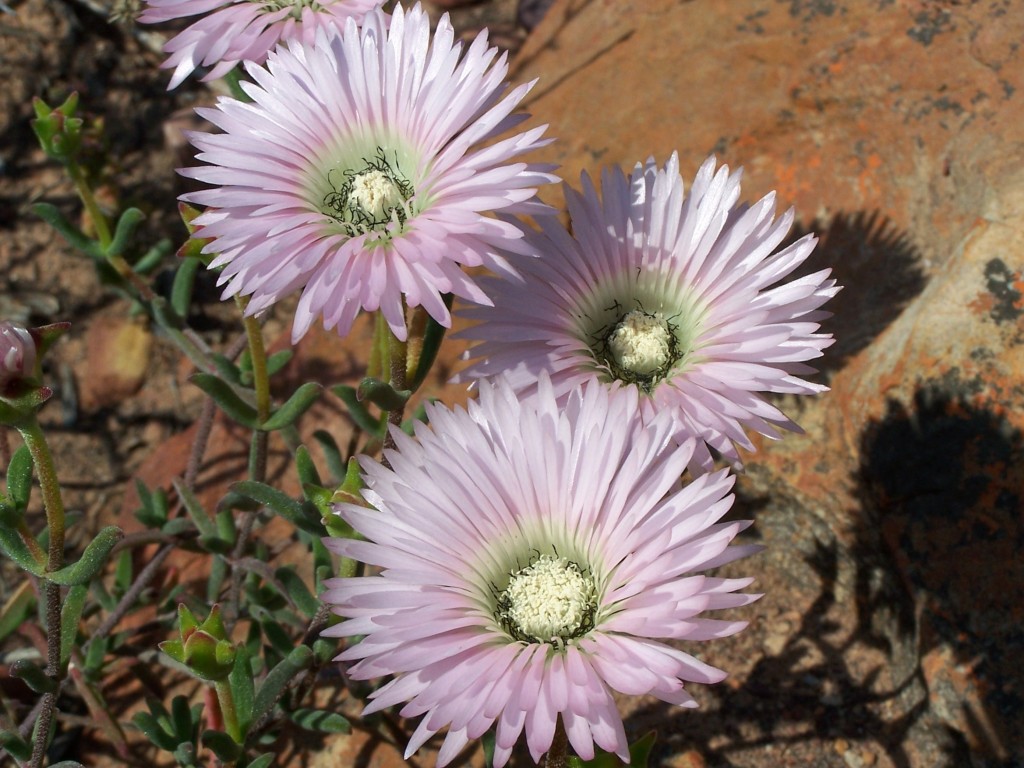
Fig. 03. MBB7436 D. ‘bellum’, Nekkies Resort 
Fig. 04. MBB7435 D. ‘hallii’, W Nekkies 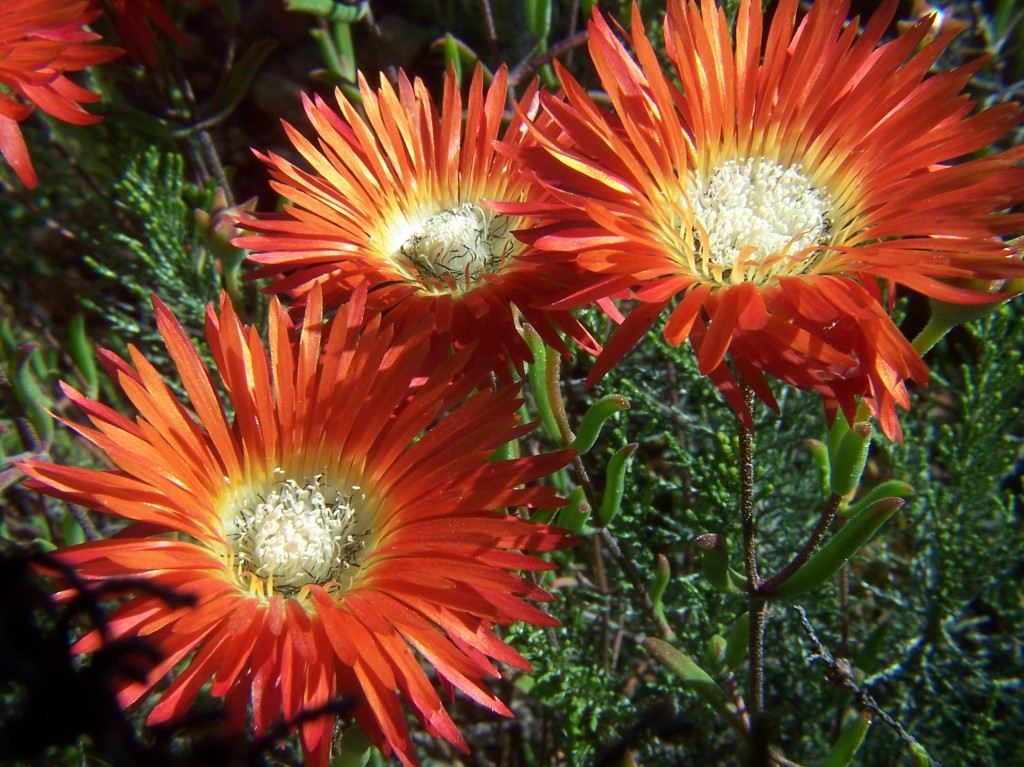
Fig. 05 MBB7436 D. micans, Nekkies Resort 
Fig. 06 MBB7436 D. micans, Nekkies Resort 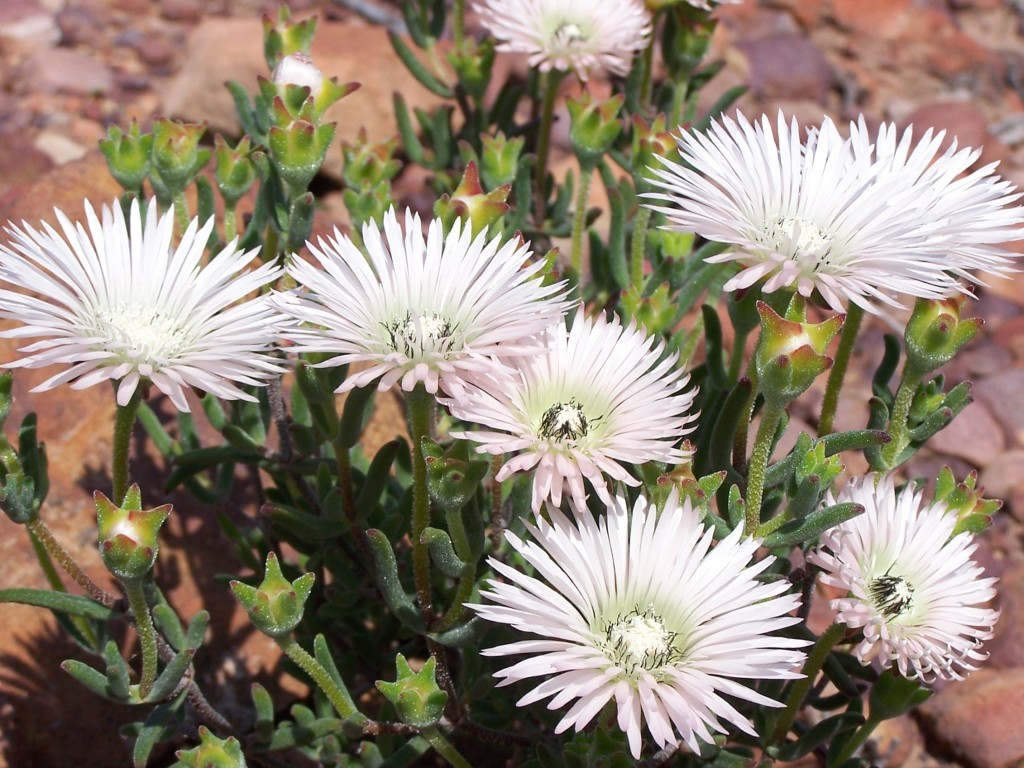
Fig. 07 MBB7436 D. micans, Nekkies Resort 
Fig. 08 MBB7436 D. micans, Nekkies Resort 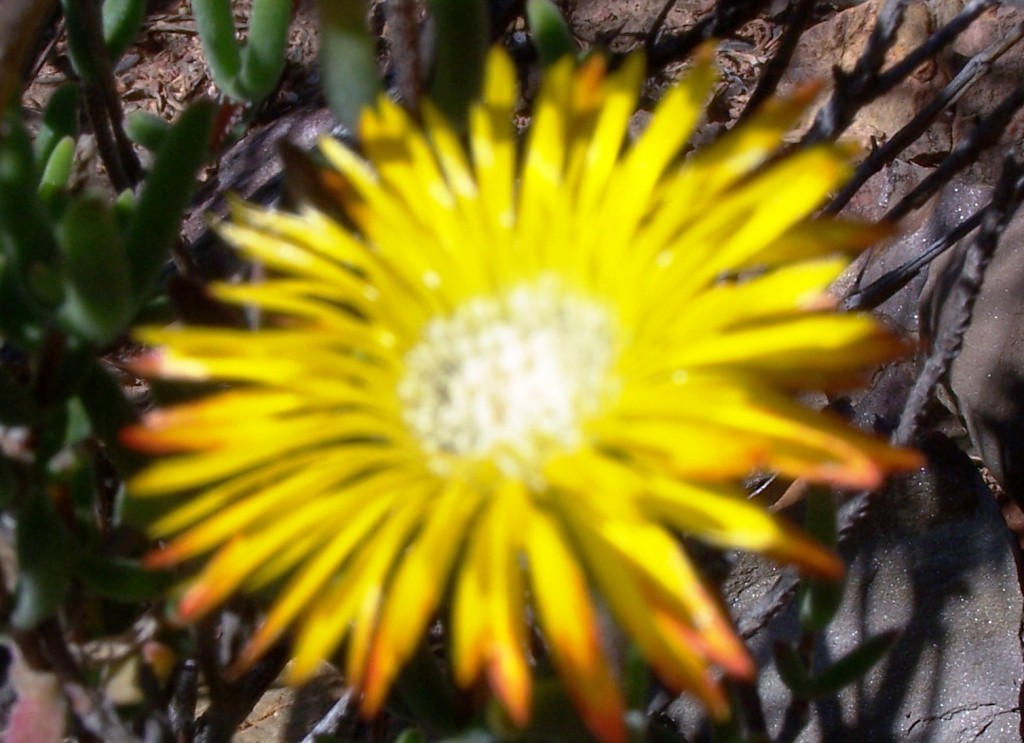
Fig. 09. MBB7435 D. ‘hallii’, W Nekkies 
Fig. 10. D. micans. Panorama. 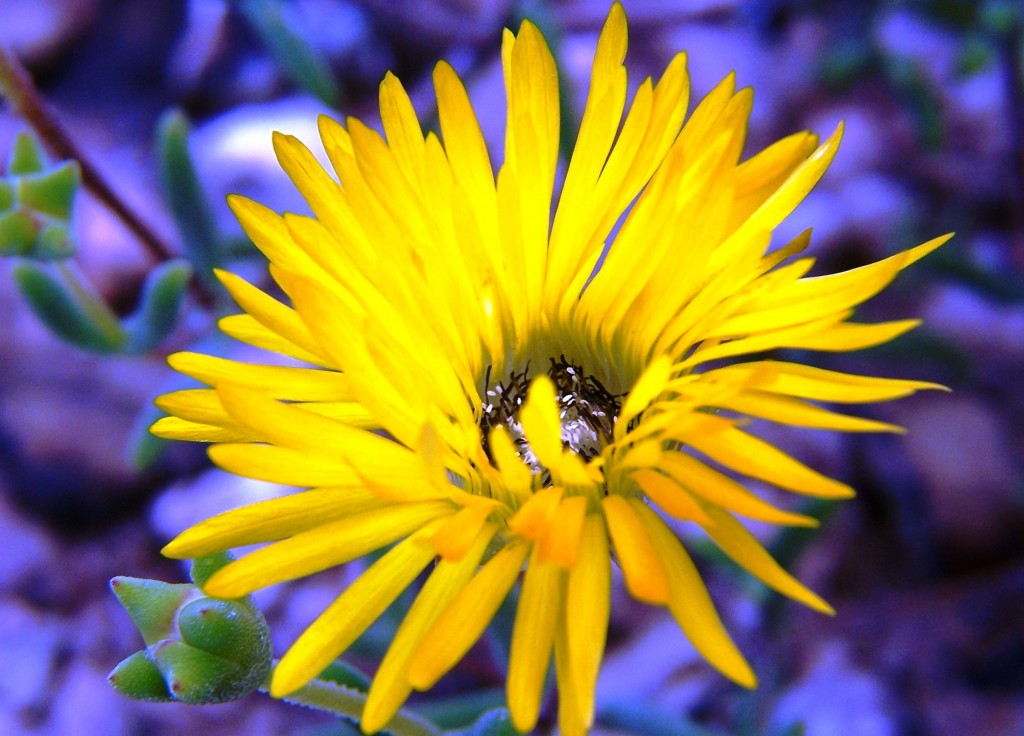
Fig. 11. D. micans. Panorama. 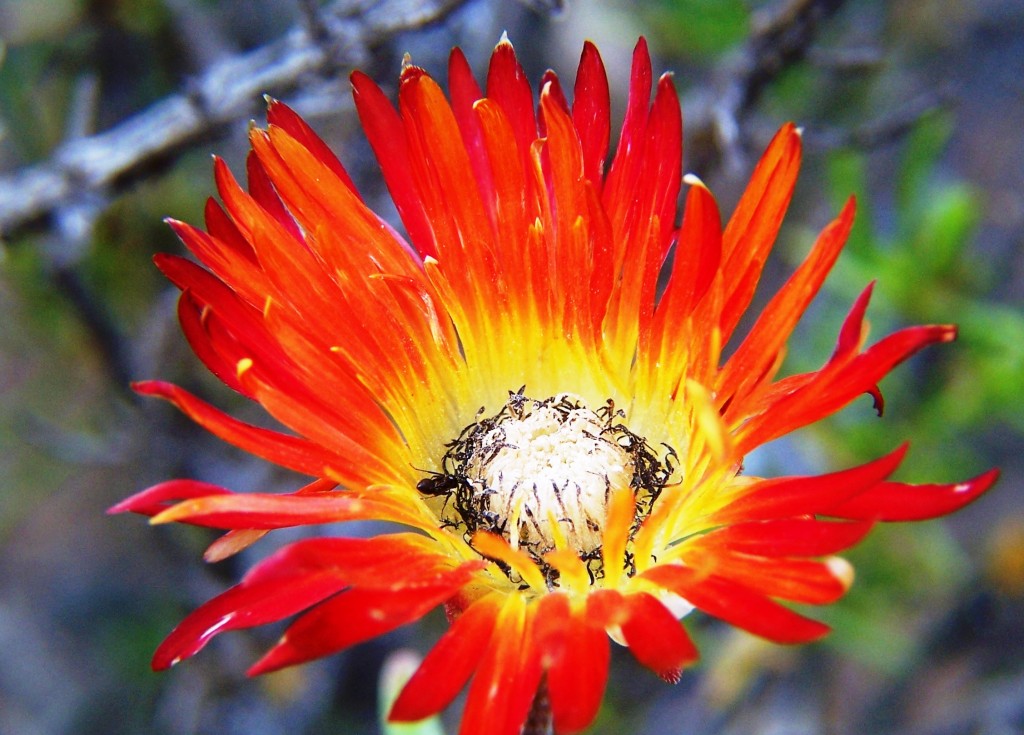
Fig. 12. D. micans. Panorama. 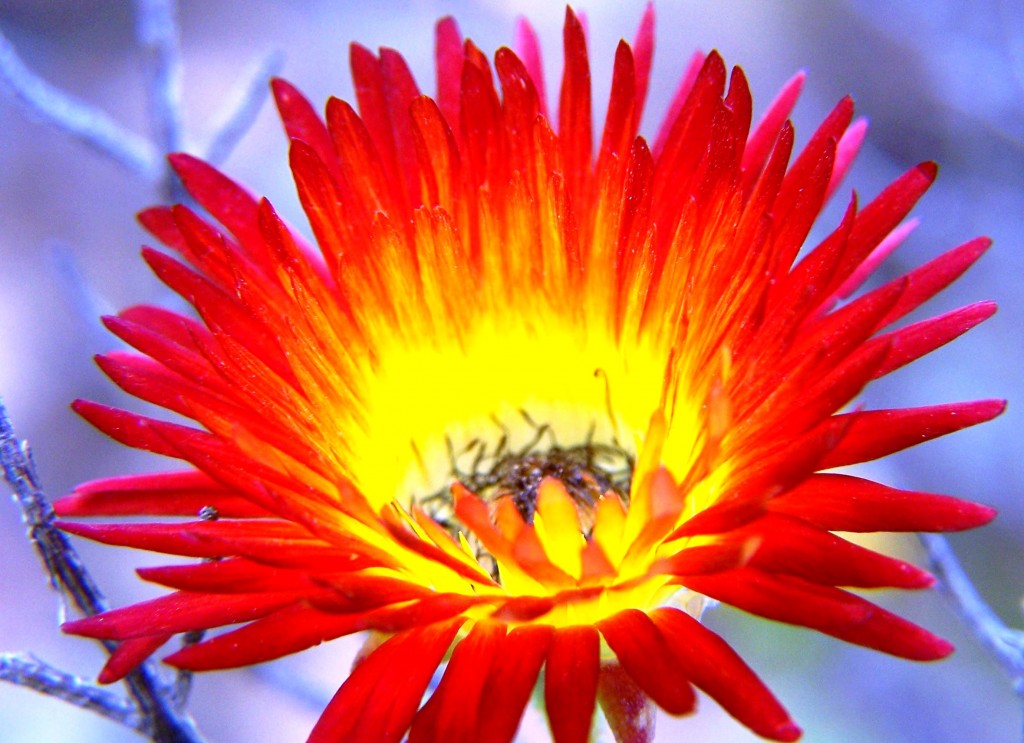
Fig. 12a. D. micans. Panorama. 
Fig. 12b. D. micans. Panorama. 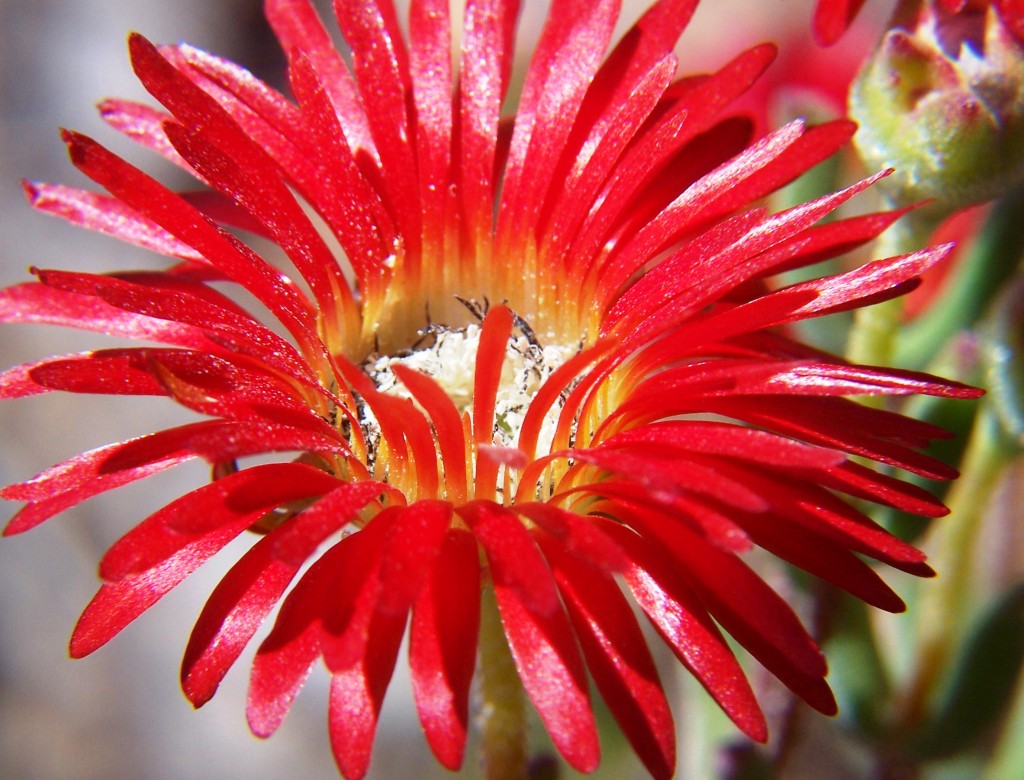
Fig. 13. 7433 D. micans. Jonaskop. 
Fig. 14. 7433 D. micans. Jonaskop. 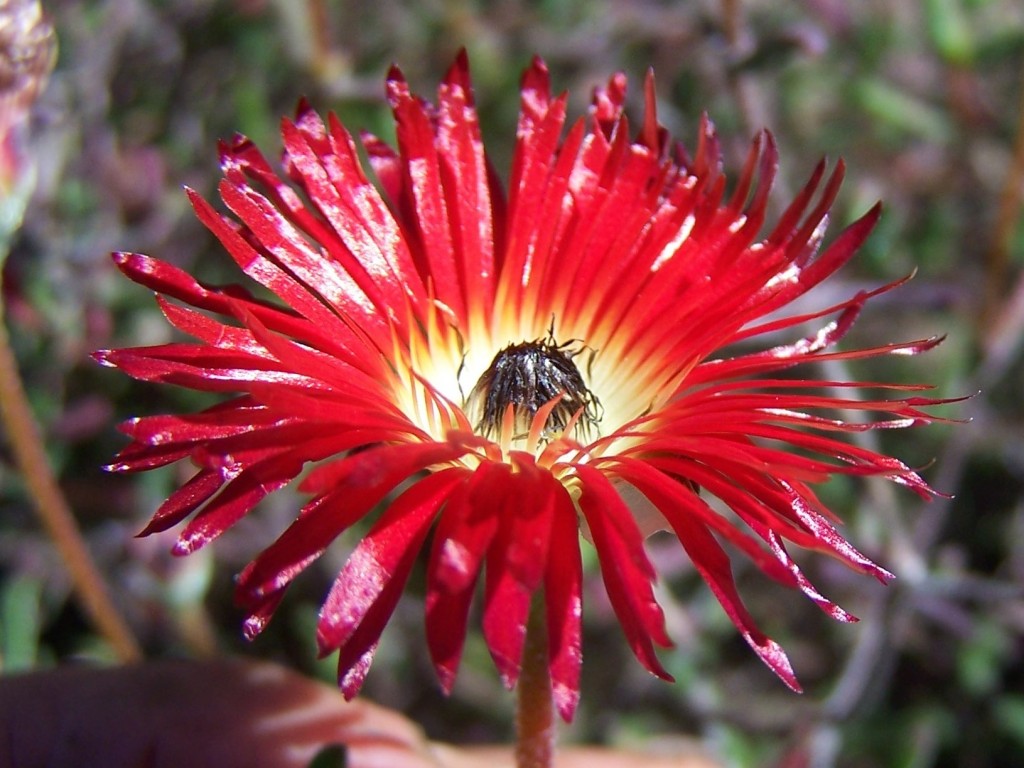
Fig. 15. MBB7267. D. micans, E Lemoenpoort 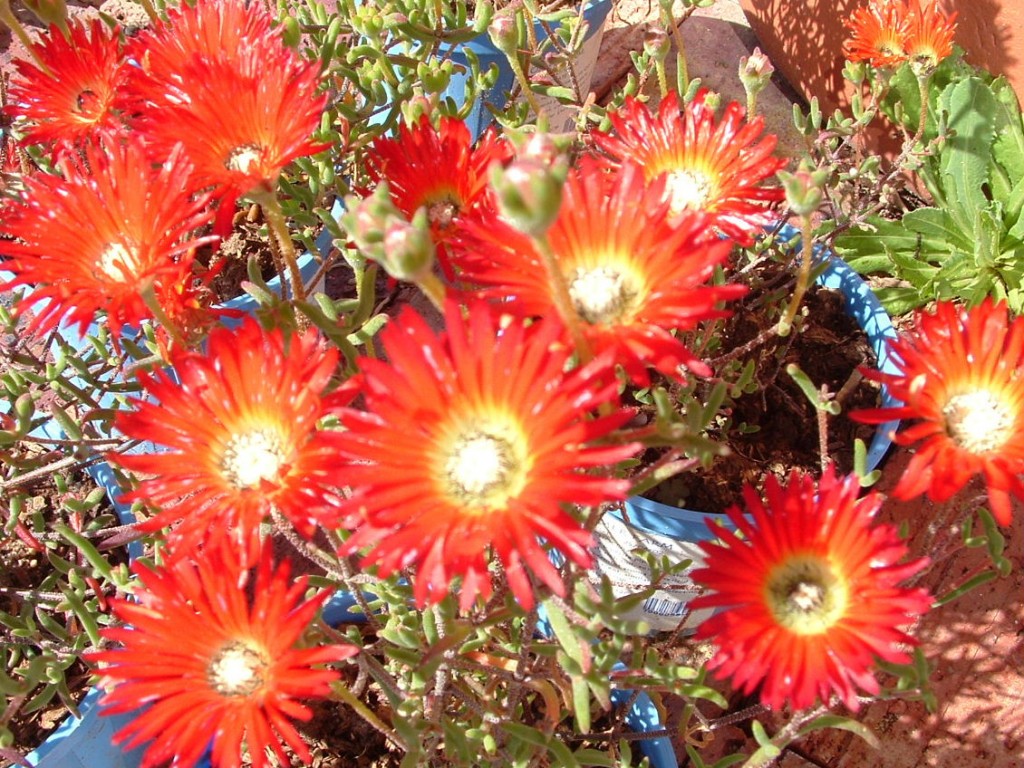
Fig. 16. MBB7267. D. micans, E Lemoenpoort 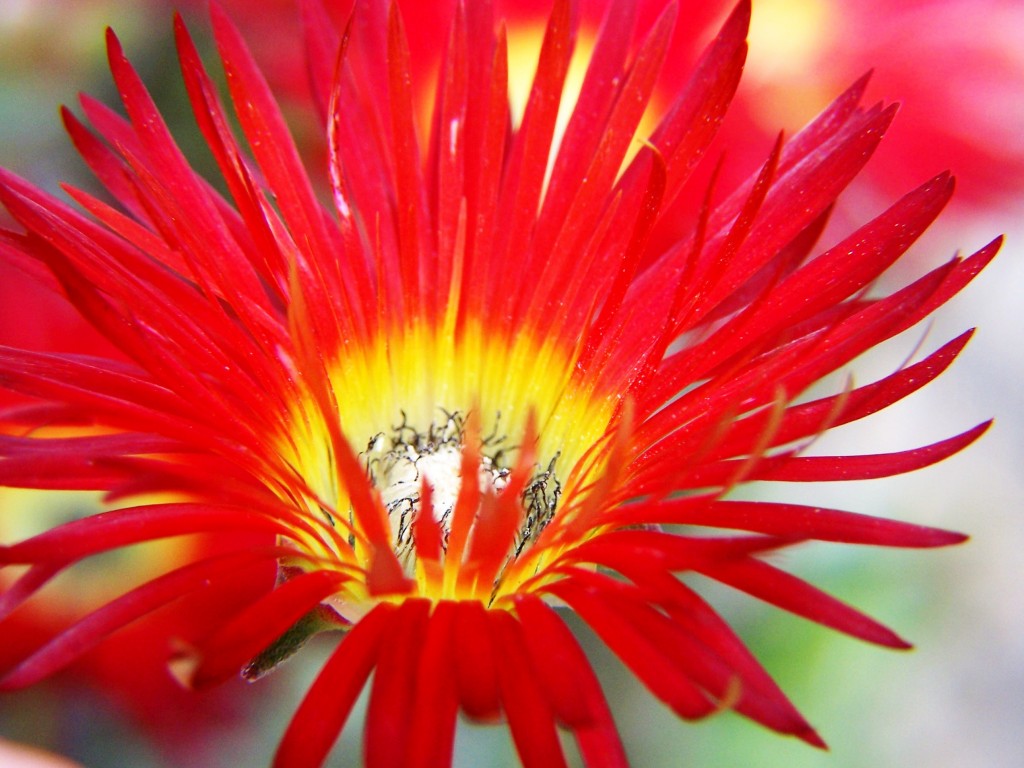
Fig. 17. 7472 D. micans. Droogerivierberg. 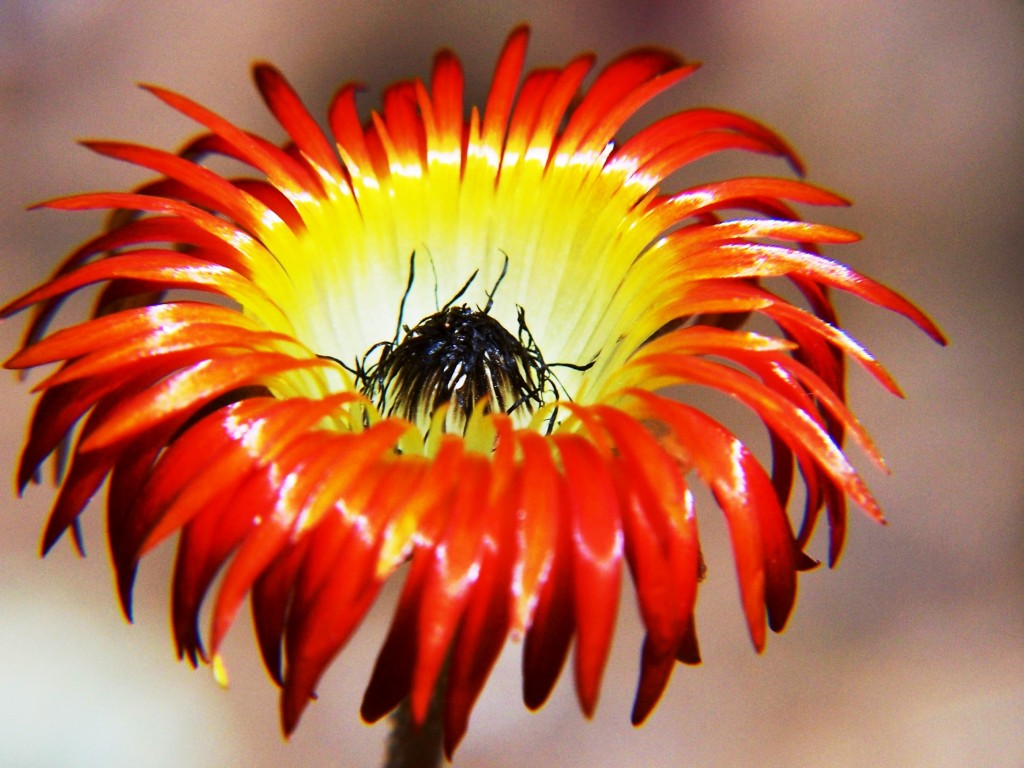
Fig. 18. 7472 D. micans. Droogerivierberg. 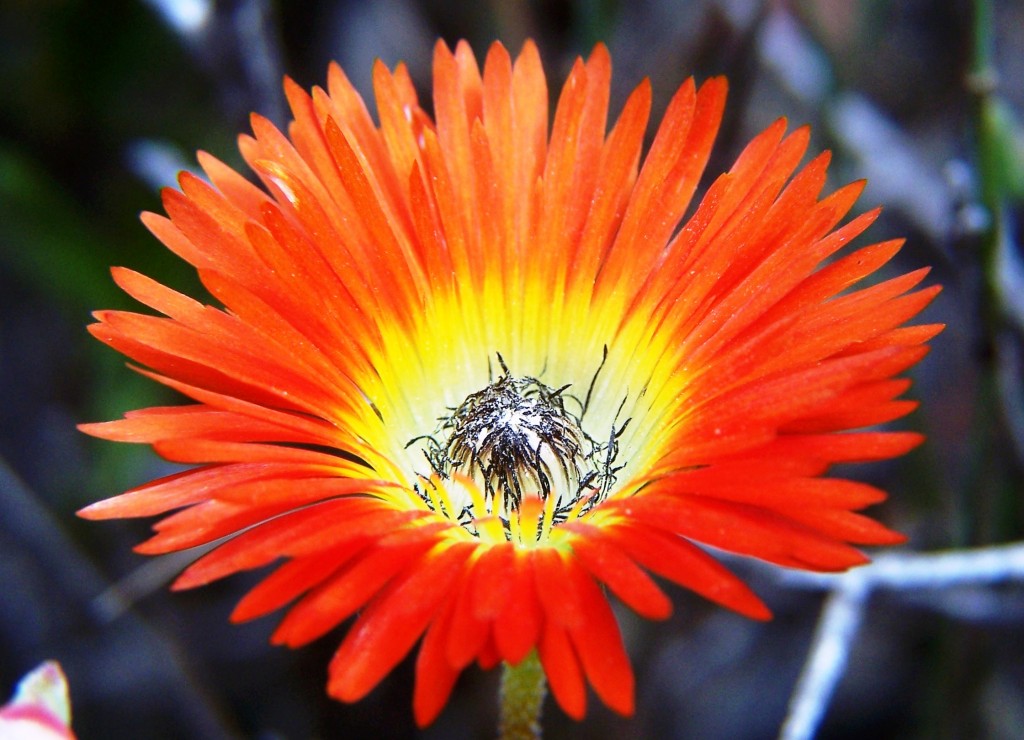
Fig. 19. 7472 D. micans. Droogerivierberg. 
Fig. 20. 7472 D. micans. Droogerivierberg. 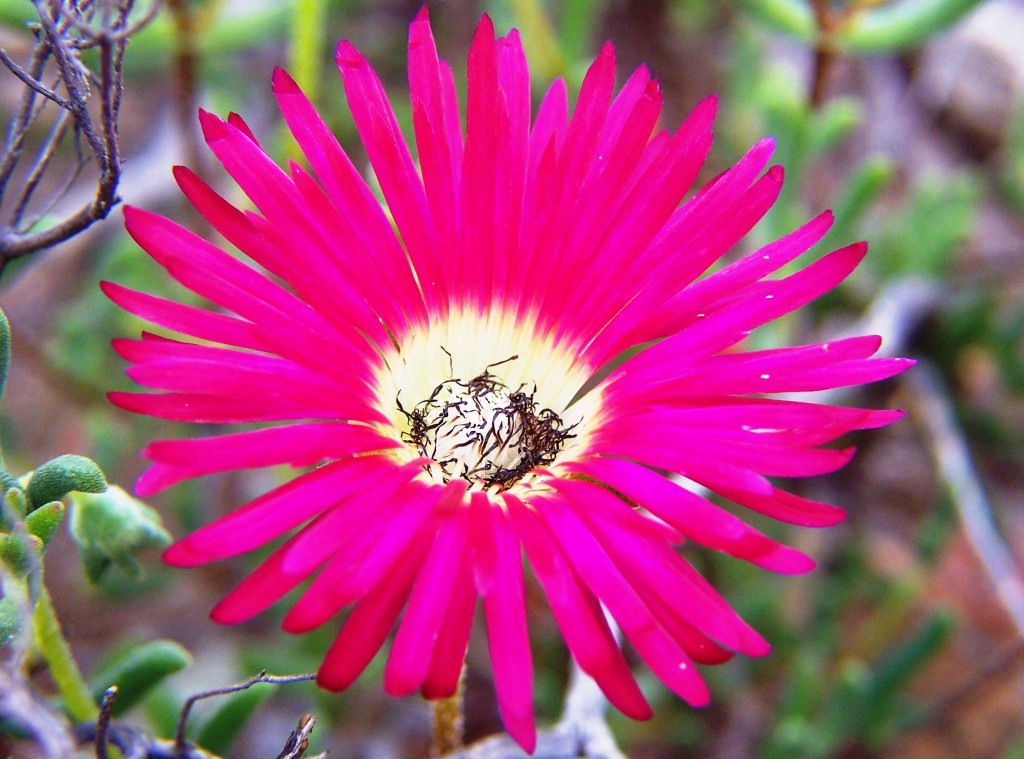
Fig. 21. 7472 D. micans. Droogerivierberg. 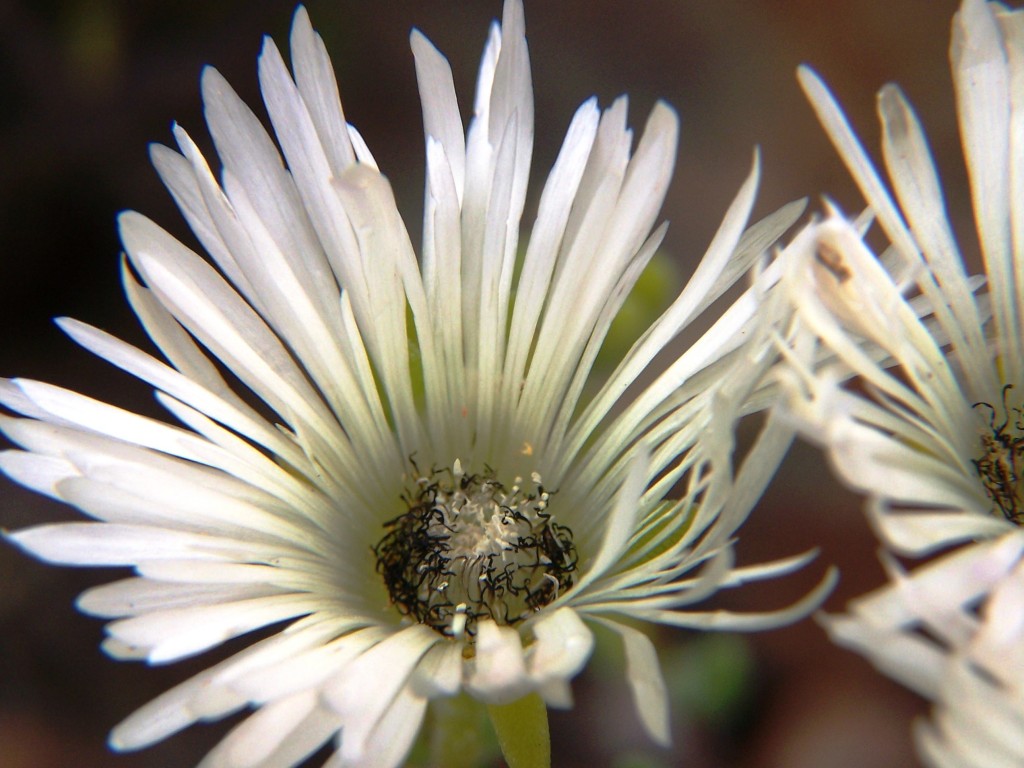
Fig. 21a. 7472 D. micans. Droogerivierberg. 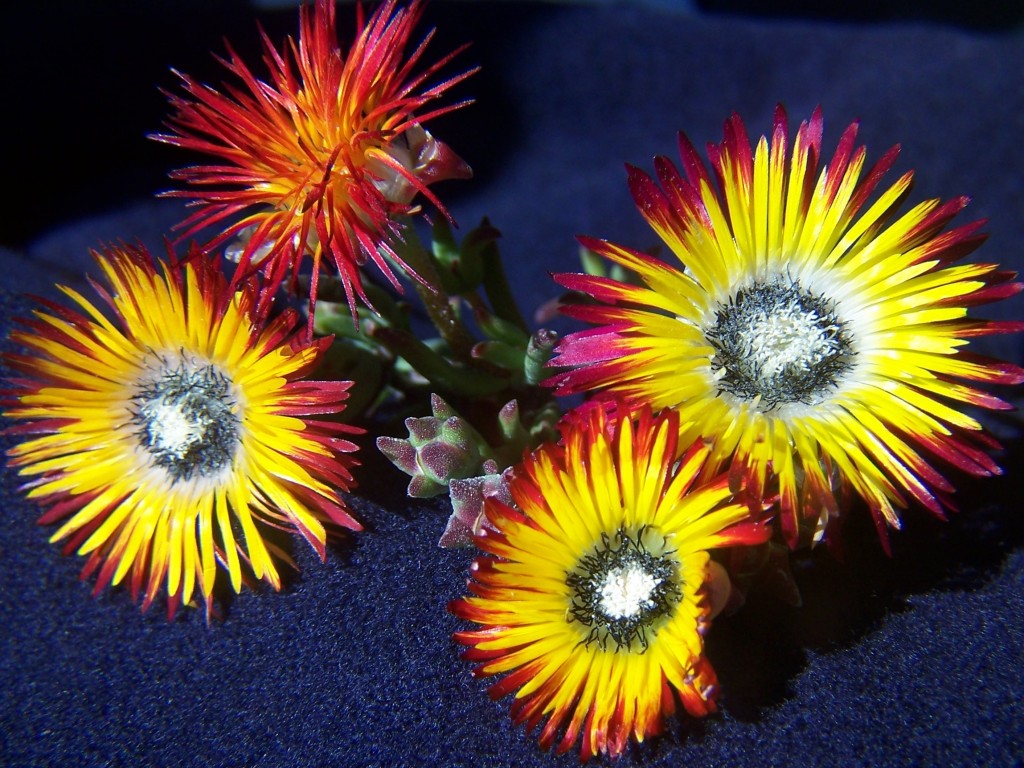
Fig. 22a. MBBsn D. micans, Keerom 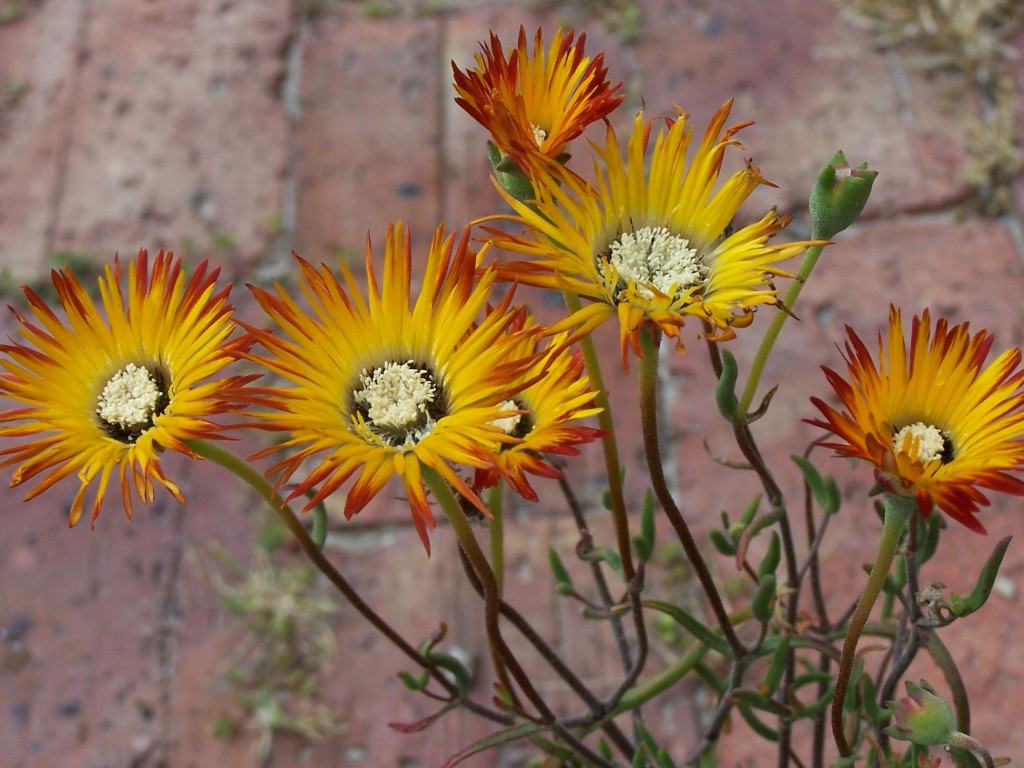
Fig. 22b. MBBsn D. micans, Keerom 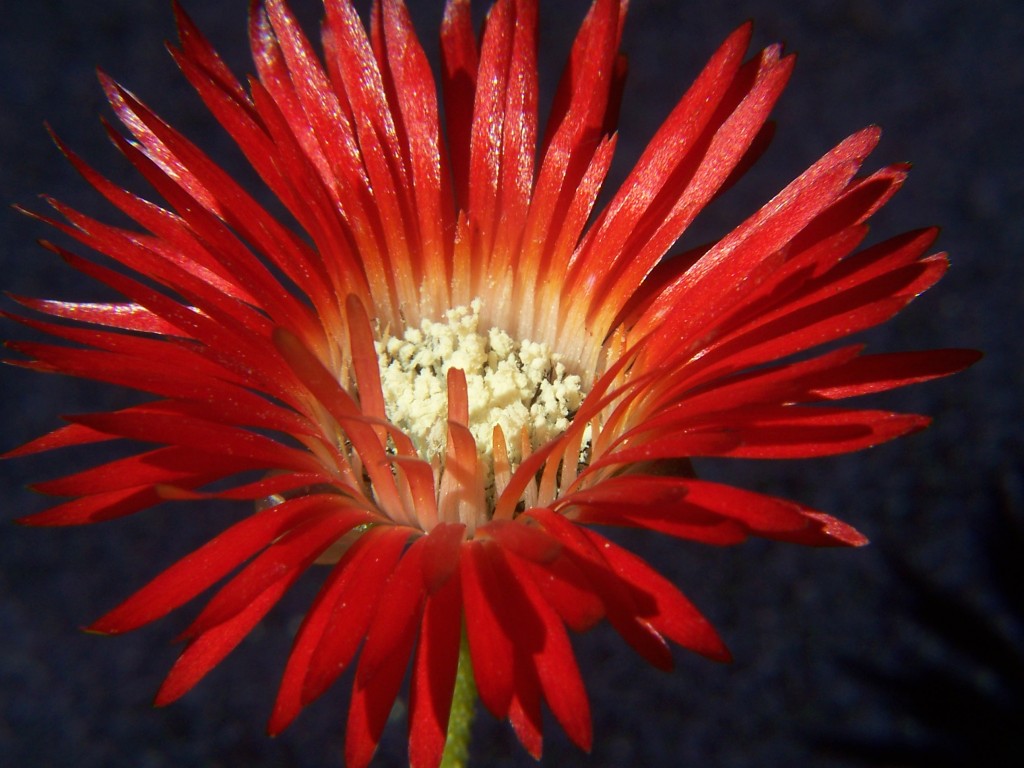
Fig. 23a. D. micans, Gadsfontein 
Fig. 23b. D. micans, Gadsfontein 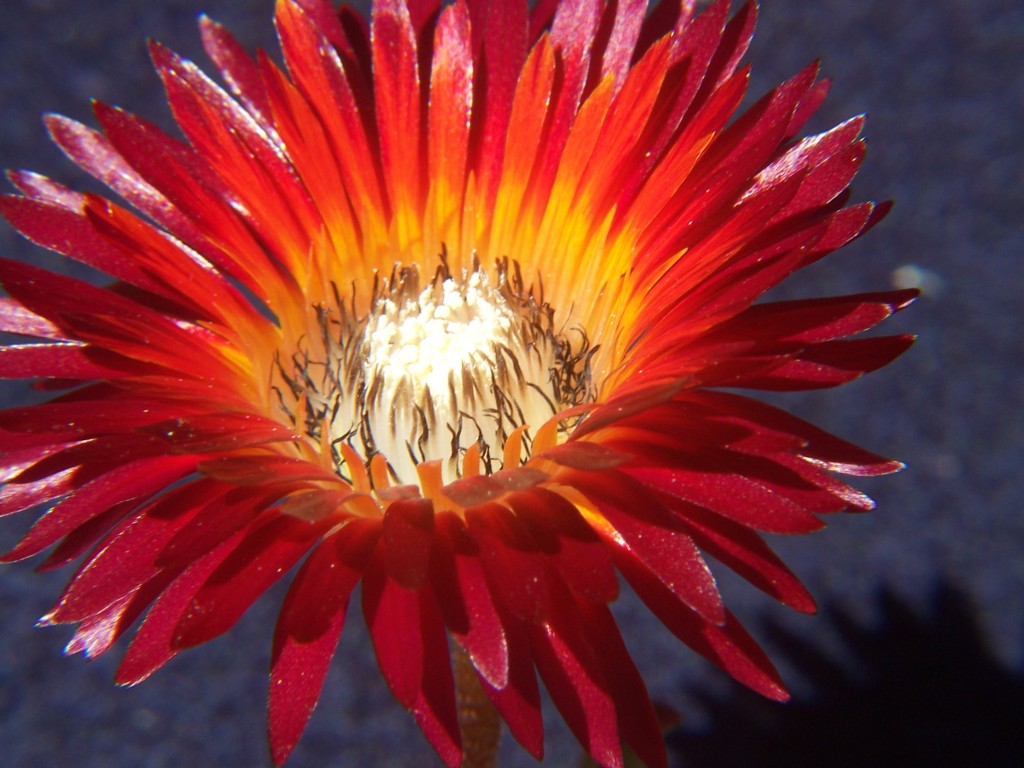
Fig. 24a. D. Micans, Sanddrif 
Fig. 24b. D. Micans, Sanddrif 
ig. 25a. MBB7451 D. micans. Middeldrift, Napky 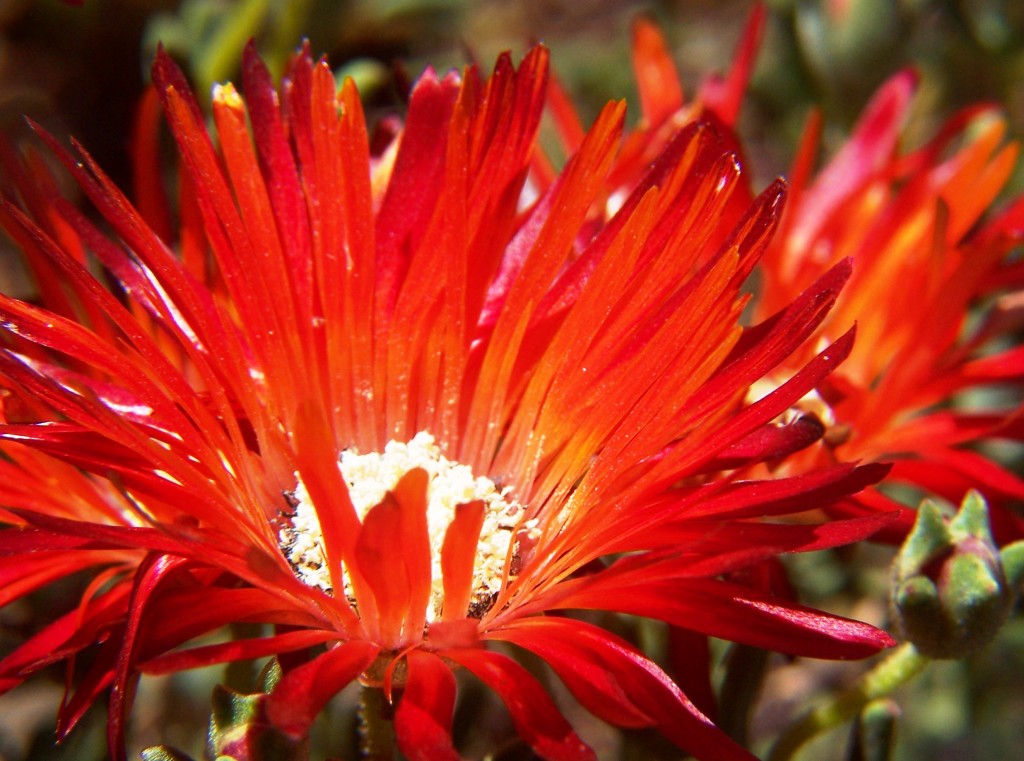
Fig. 25b. MBB7451 D. micans. Middeldrift, Napky 
Fig. 26a. MBB7498 D. micans, Potteberg Farm 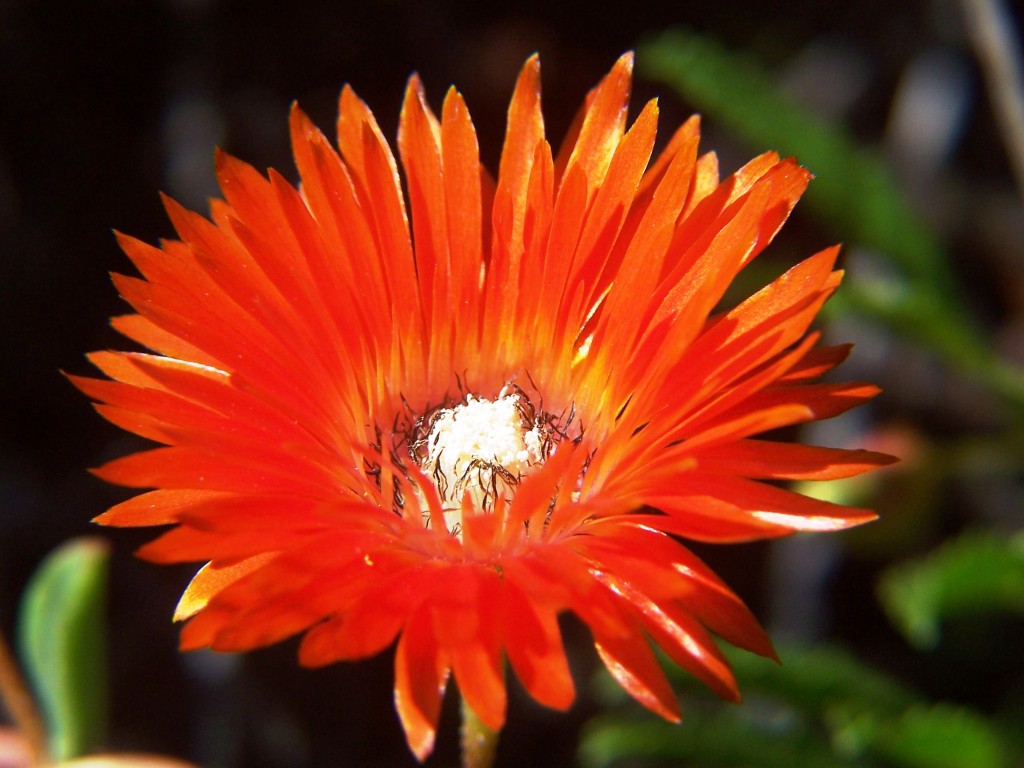
Fig. 26b. MBB7498 D. micans, Potteberg Farm 
Fig. 26c. MBB7498 D. micans, Potteberg Farm 
Fig. 27a. MBB7545 D. micans, Bar Harbour, Infanta 
Fig. 27b. MBB7545 D. micans, Bar Harbour, Infanta 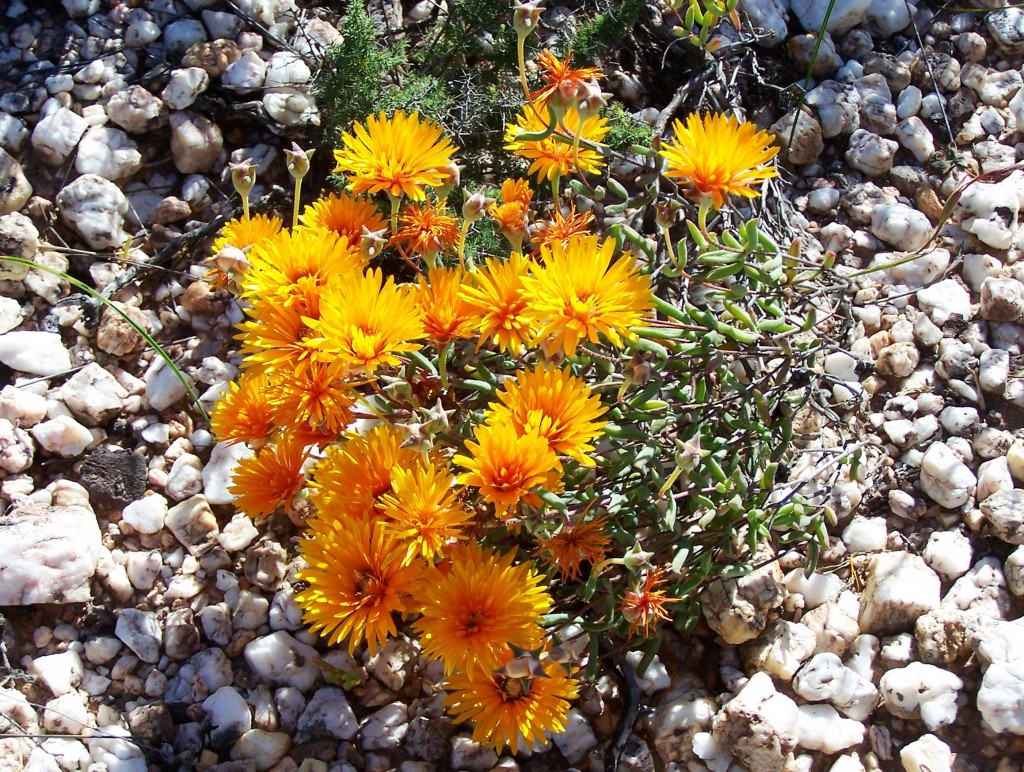
Fig. 28a. MBB7493 D. micans, Klipport, S Bromberg 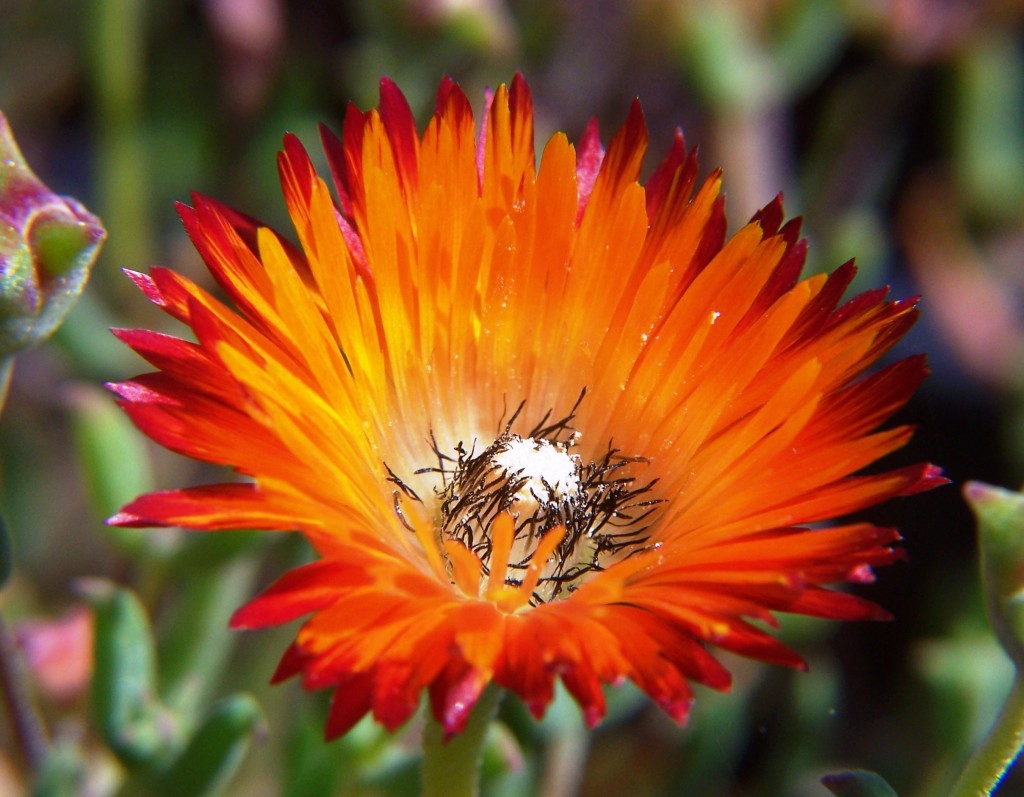
Fig. 28b. MBB7493 D. micans, Klipport, S Bromberg 
Fig. 29a. MBB7493 D. micans, Klipport, S Bromberg 
Fig. 29b. MBB7493 D. micans, Klipport, S Bromberg 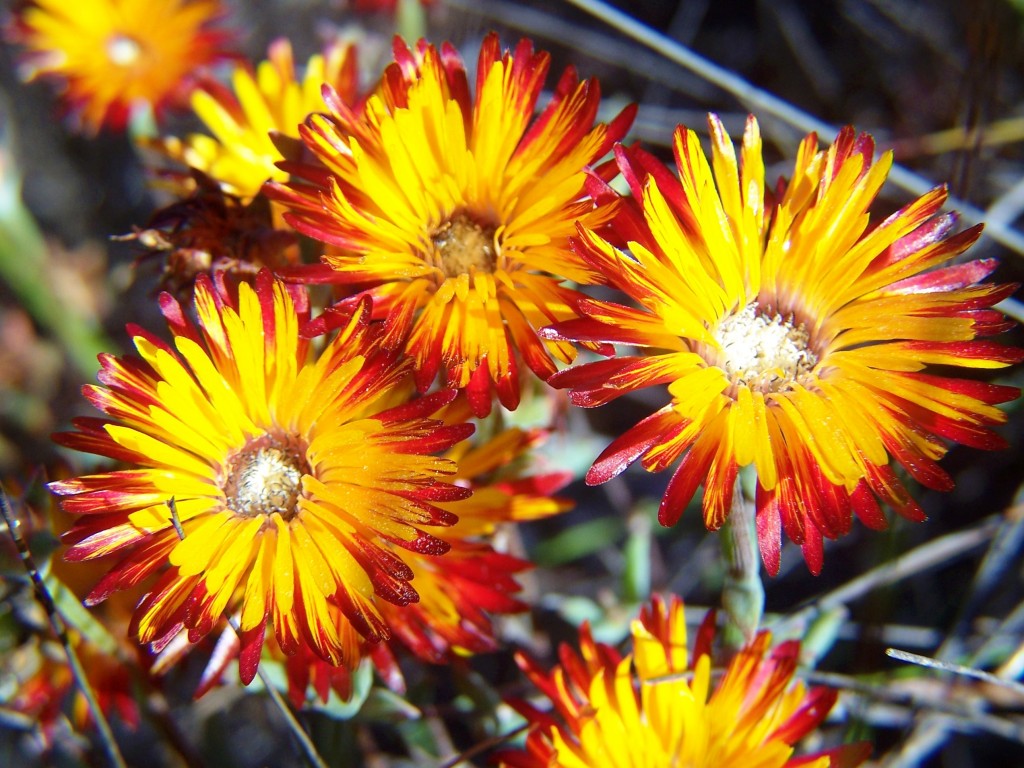
Fig. 30. MBB7493 D. micans, Klipport, S Bromberg 
Fig. 31. MBB7465 D. ‘lavisii’, N Napier 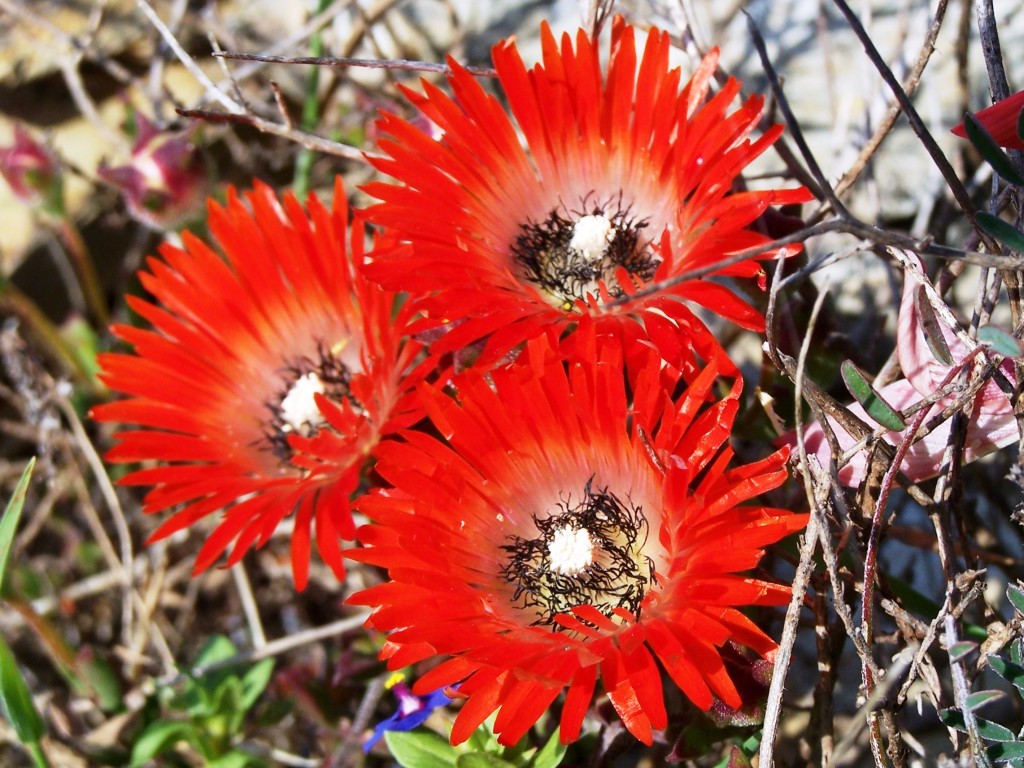
Fig. 32a. MBB sn. D. ‘lavisii’, Swartjeskop 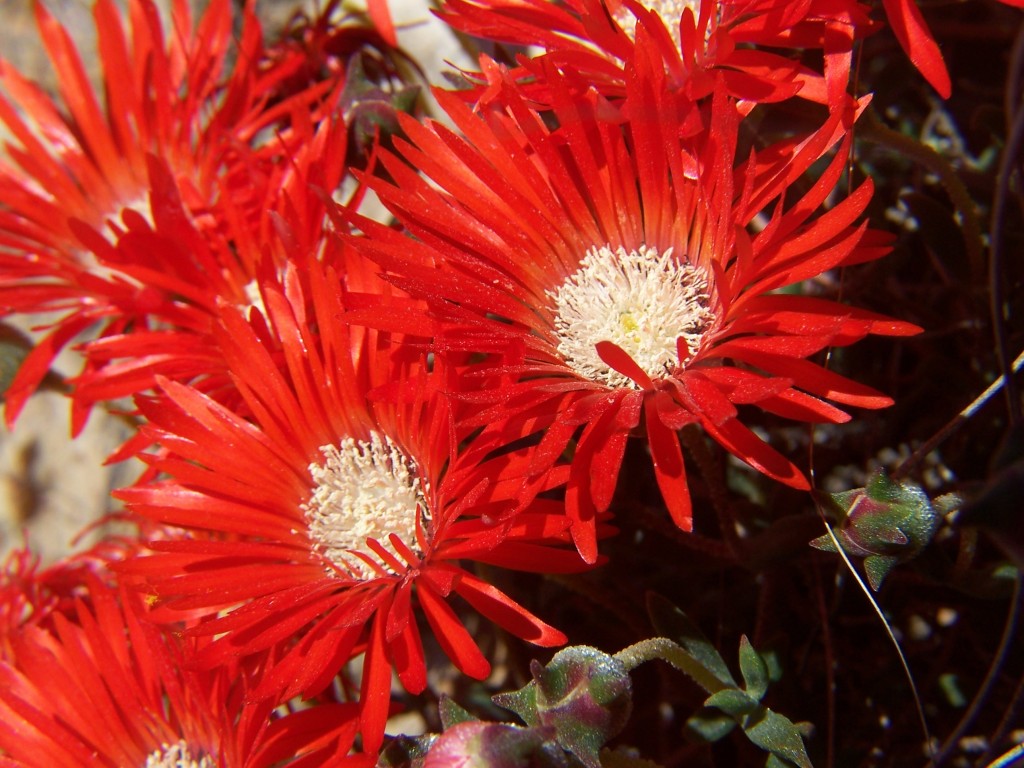
Fig. 32b. MBB sn. D. ‘lavisii’, Swartjeskop 
Fig. 33. MBB7940 D. ‘lavisii’, Ouplaas, DeHoop. 
Fig. 34. MBB7824 D. micans, Klipbult, SE Swellendam. 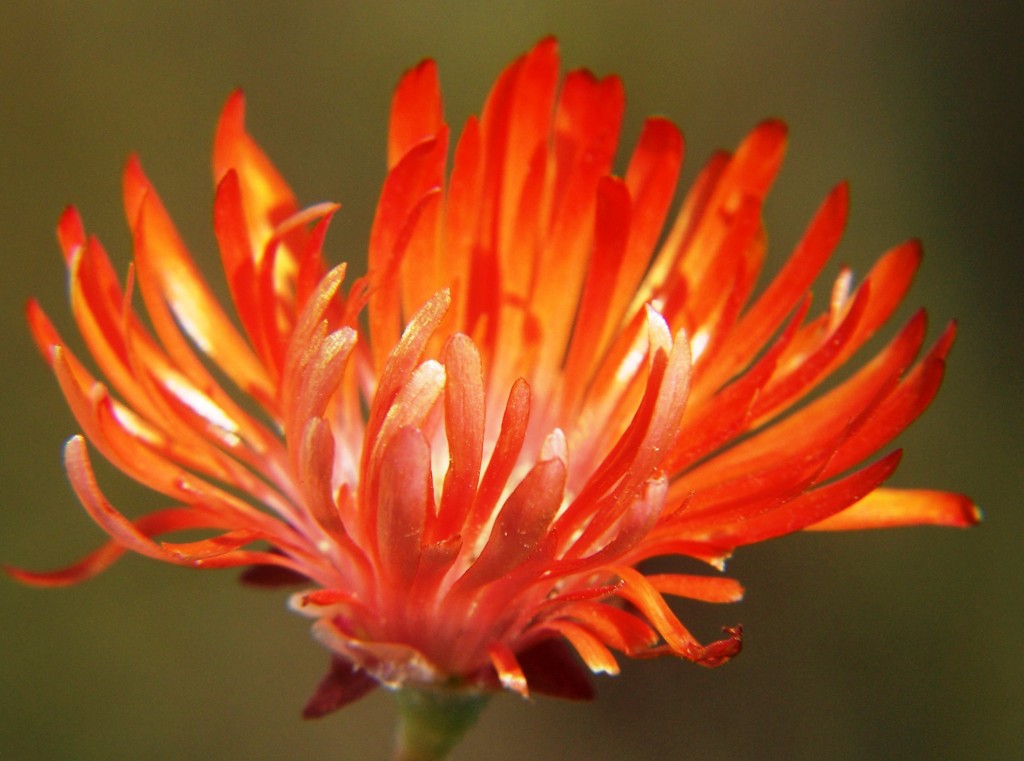
Fig. 35a. MBB7572 D. ‘lavisii’, Nature Reserve, Riversdale. 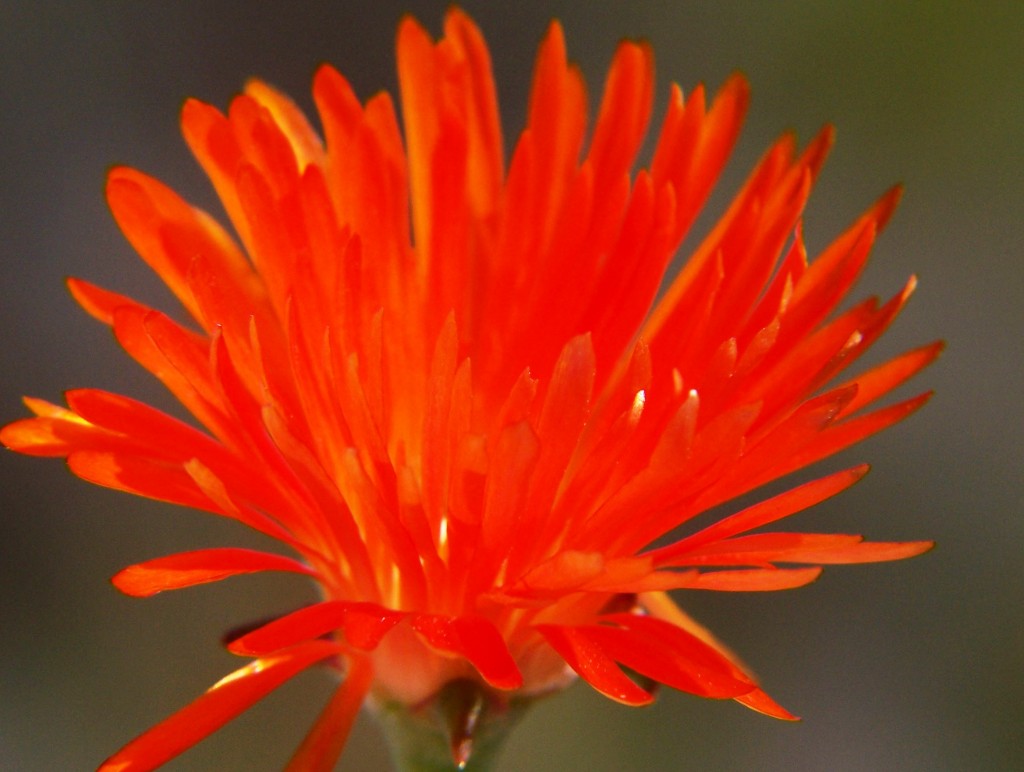
Fig. 35b. MBB7572 D. ‘lavisii’, Nature Reserve, Riversdale. 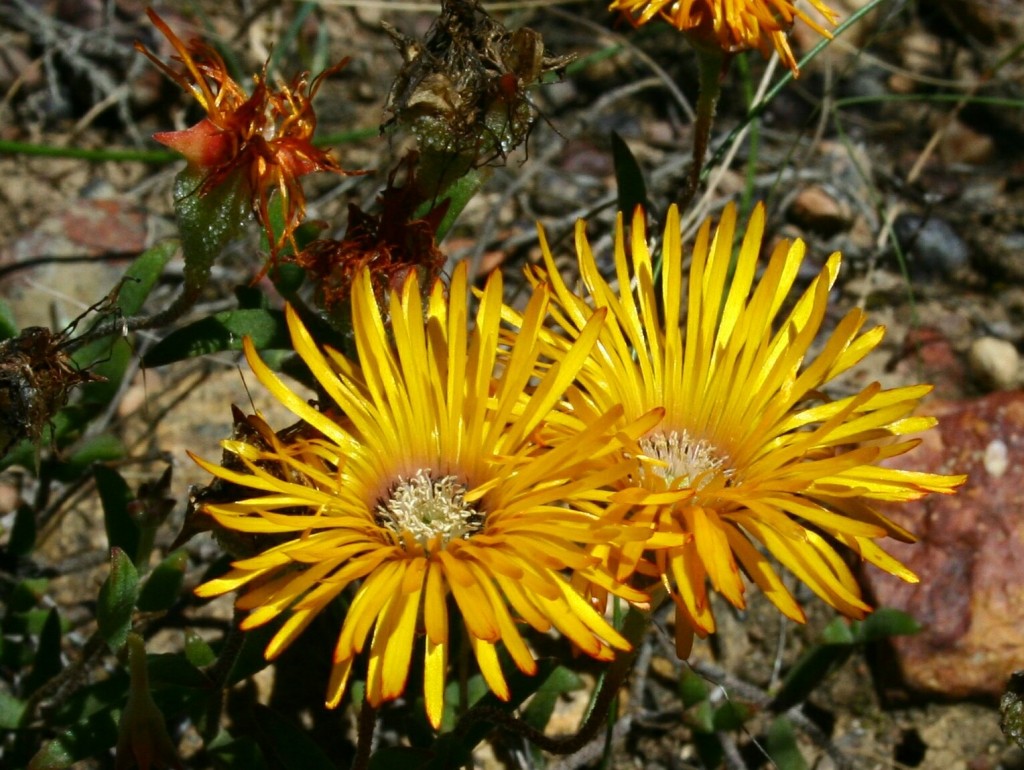
Fig. 35c. A. Vloks D. ‘lavisii’, Nature Reserve, Riversdale. 
Fig. 36. MBB7787 D. ‘edwardsii’, Pinnacle Point, Mossel Bay 
Fig. 36. J. Vlok D. ‘edwardsii’, Pinnacle Point, Mossel Bay 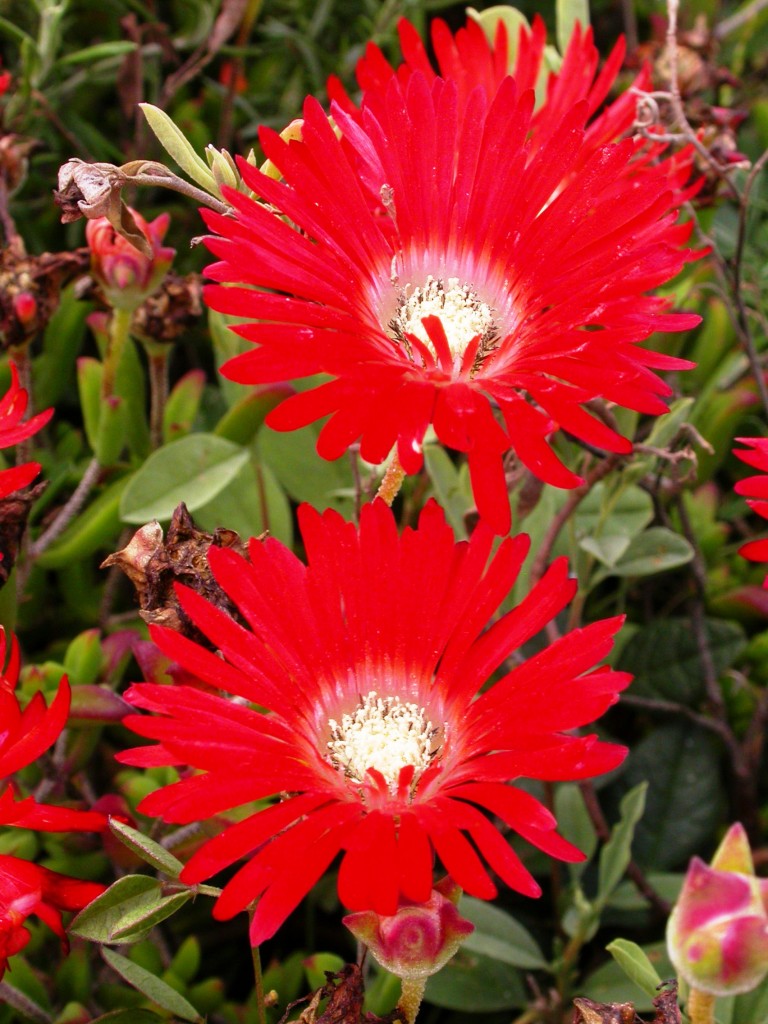
Fig. 37. J. Vlok D. ‘edwardsii’, Pinnacle Point, Mossel Bay 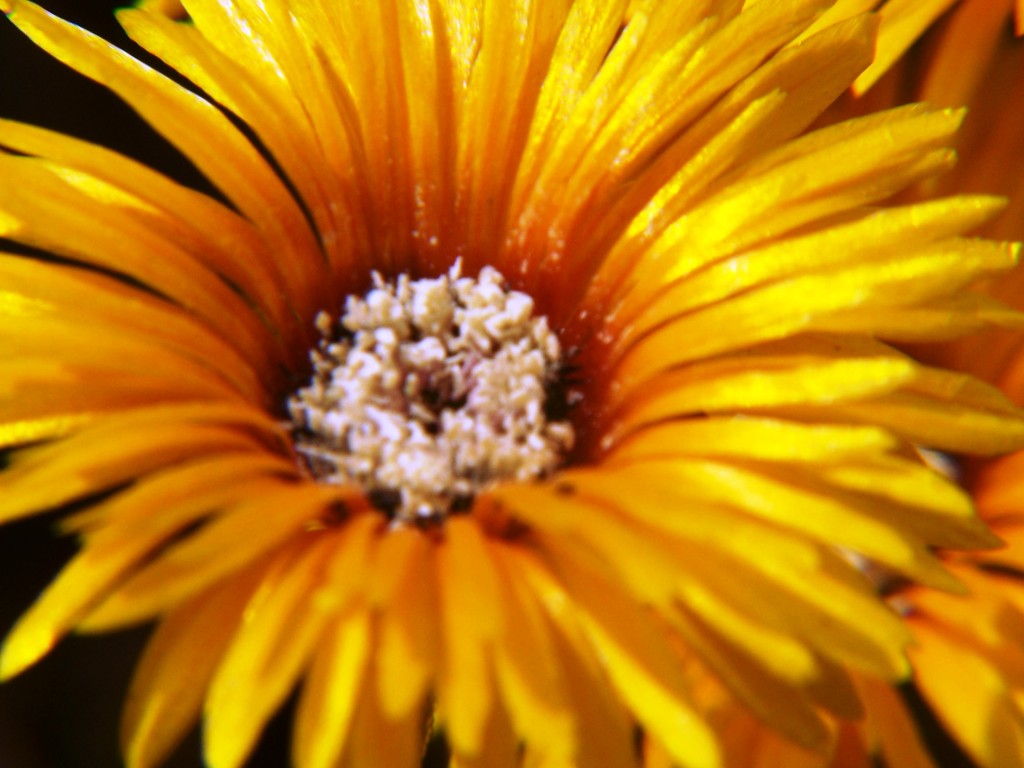
Fig. 39. MBB7547 D. speciosum, Uniondale 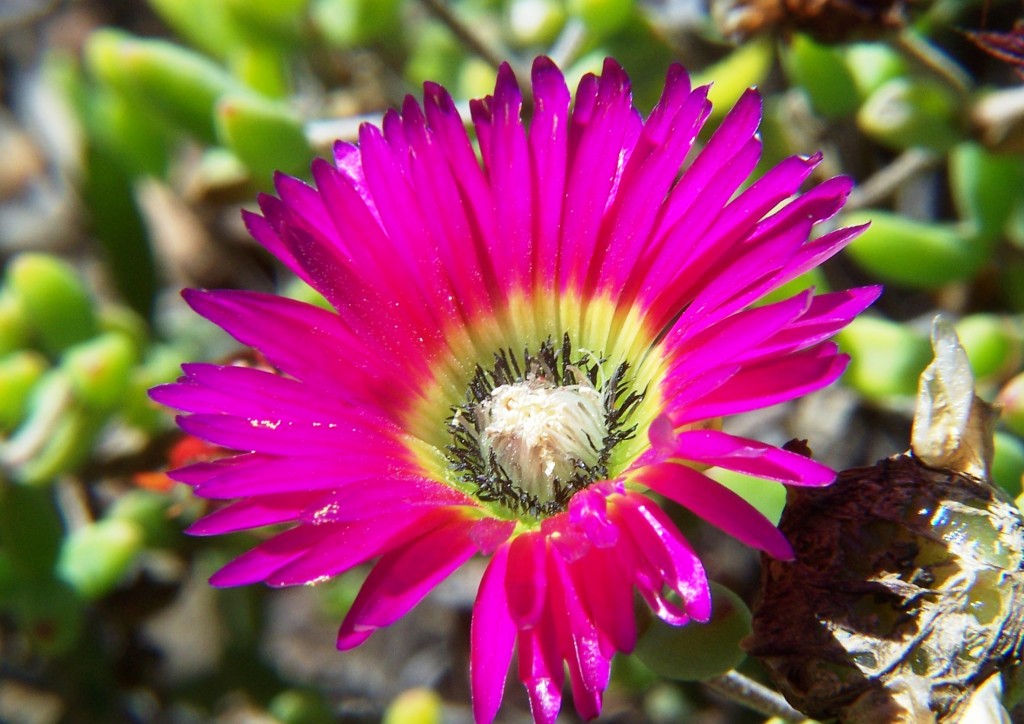
Fig. 40a. MBB7471 D. speciosum, Droogeriviersberg 
Fig. 40b. MBB7471 D. speciosum, Droogeriviersberg 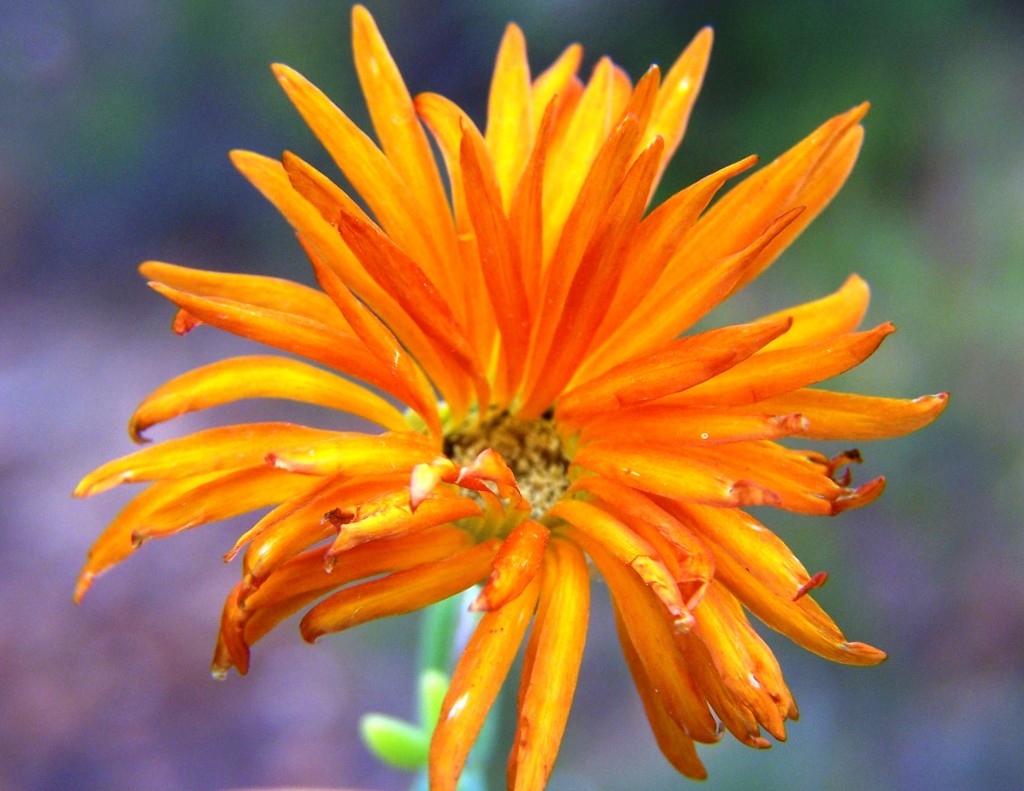
Fig. 40c. MBB7471 D. speciosum, Droogeriviersberg 
Fig. 40d. MBB7471 D. speciosum, Droogeriviersberg 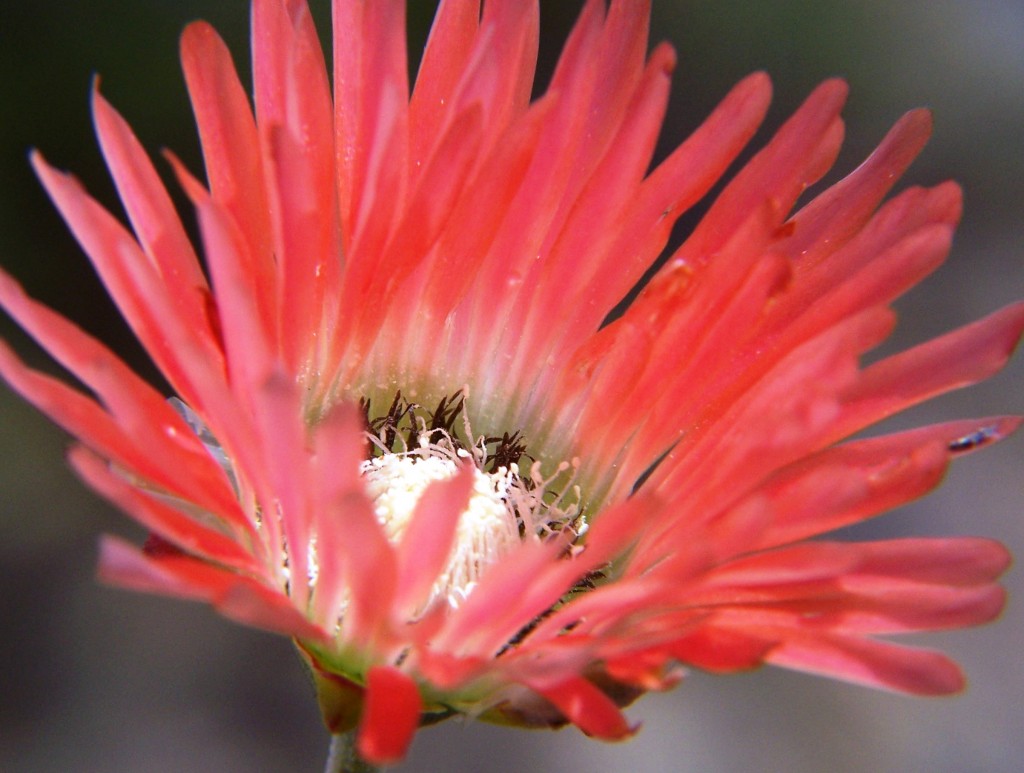
Fig. 40e. MBB7471 D. speciosum, Droogeriviersberg 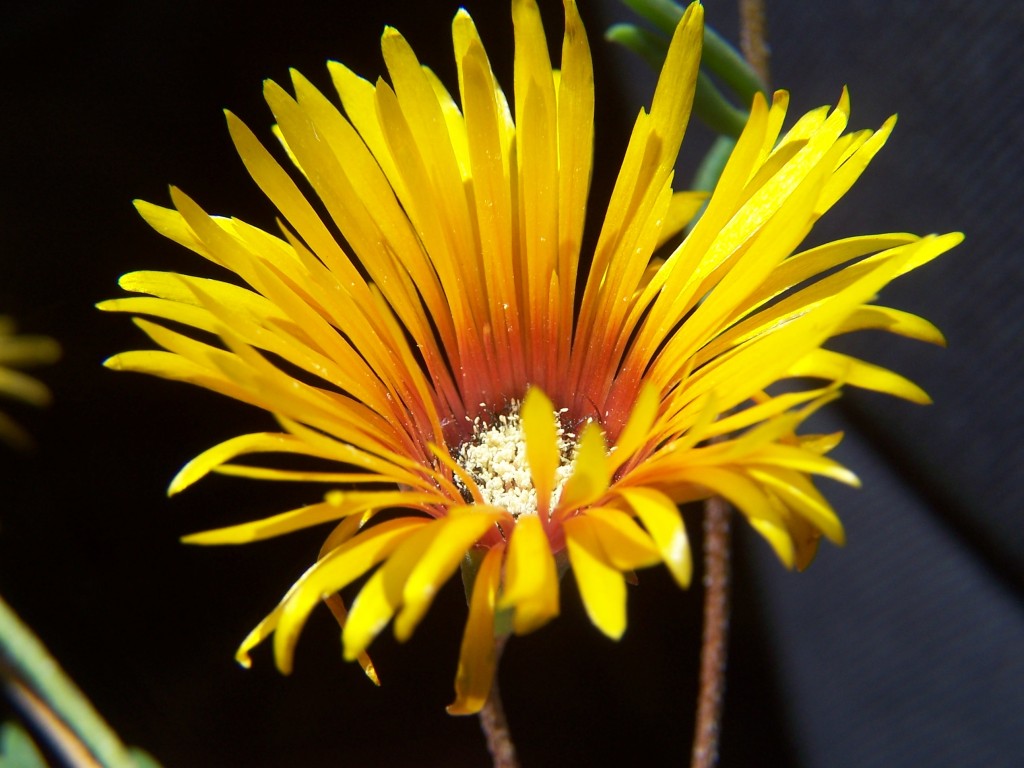
Fig. 40f. MBB7471 D. speciosum, Droogeriviersberg
